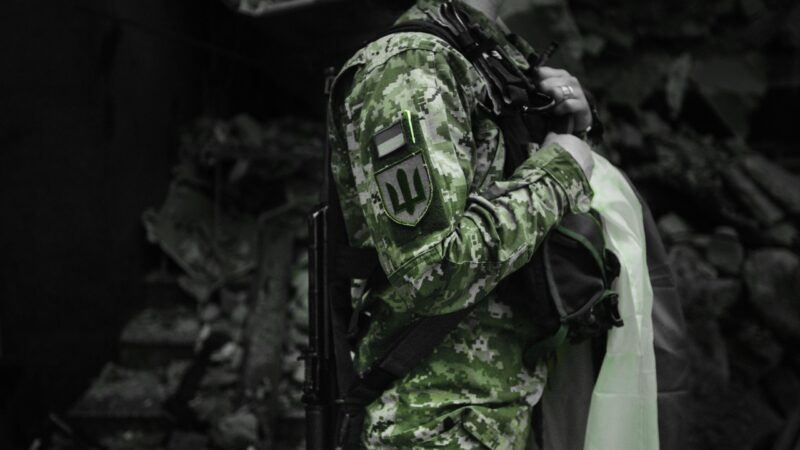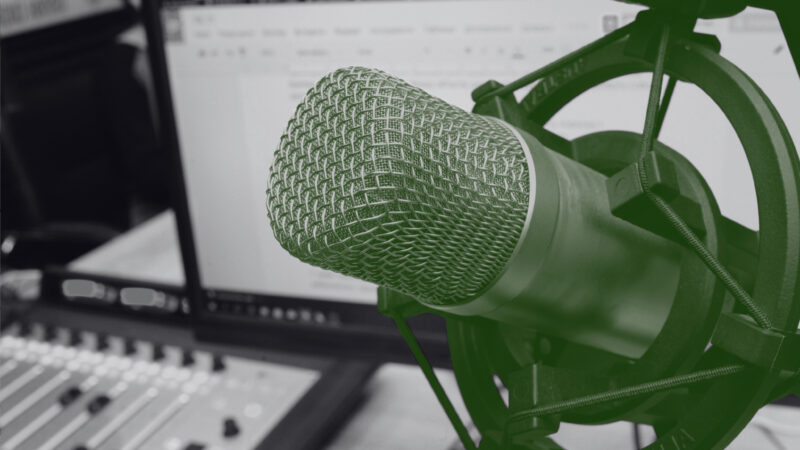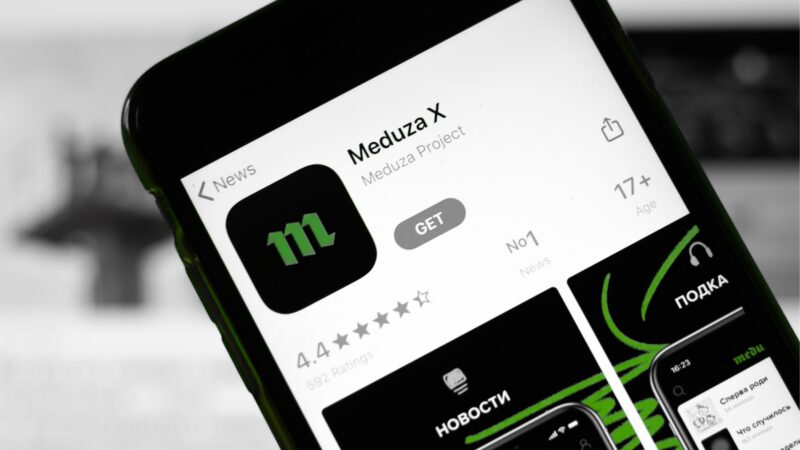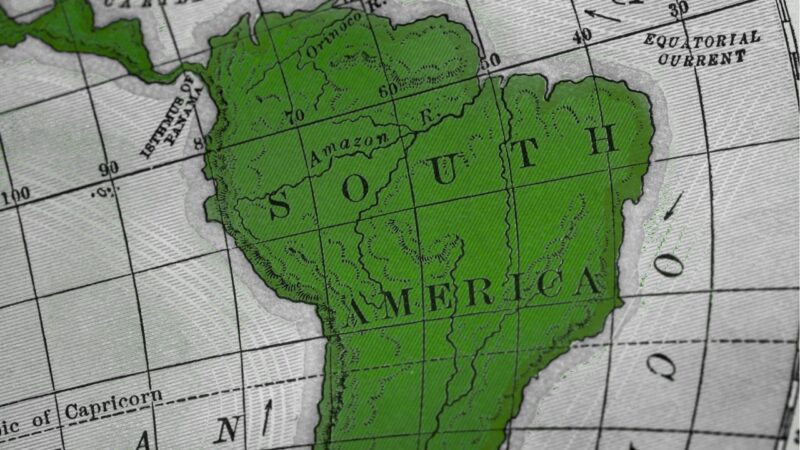Interview with Mychailo Wynnyckyj | Ukrainians need to win the war as quickly as possible
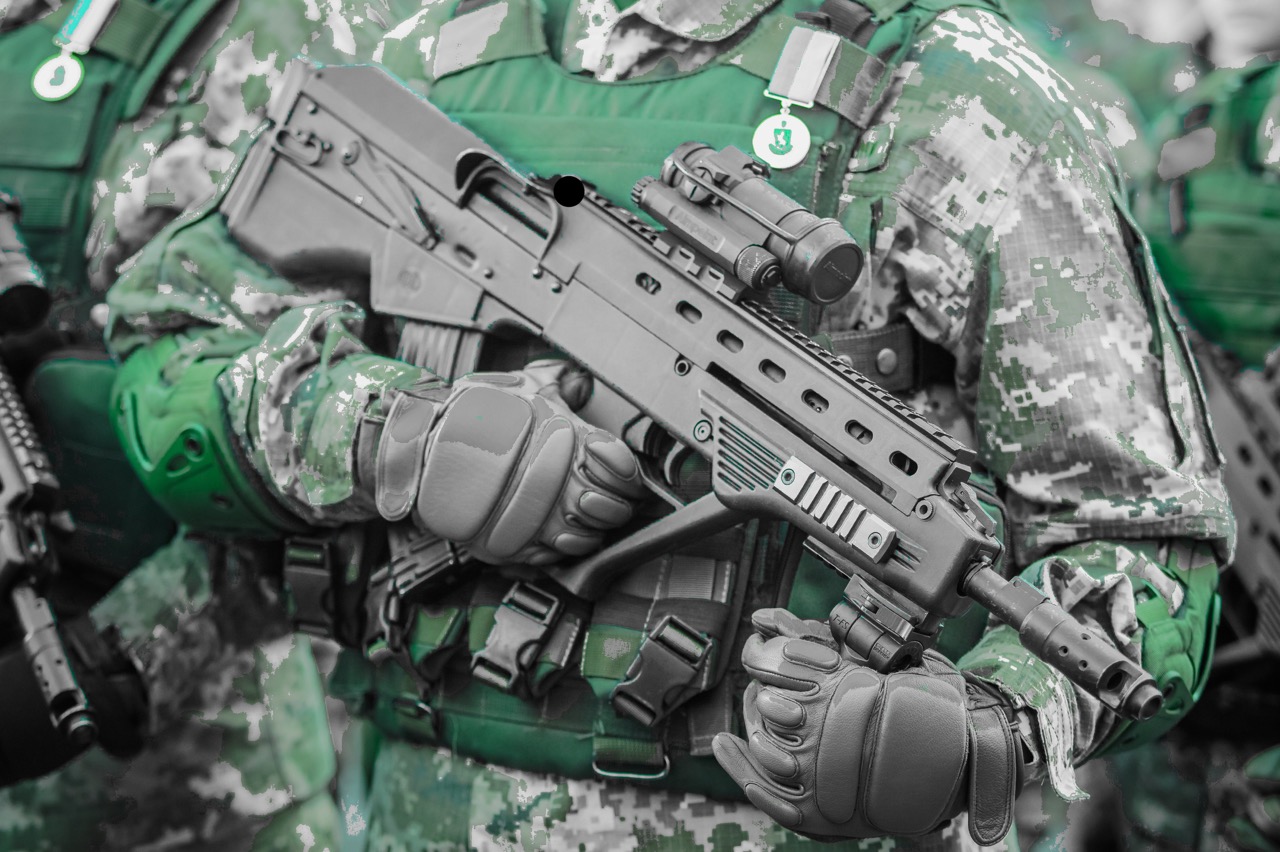
Oleksandr Pankieiev: What are the main changes you have observed in Ukrainian society since Russia’s full-scale invasion began? How has the war affected Ukrainian identity?
Mychailo Wynnyckyj: The changes to Ukrainian society that I have witnessed since the start of Russia’s full-scale invasion have been massive. We have seen grassroots activism, unparalleled patriotism, popular resistance, and impressive resilience in the face of physical, economic and psychological hardship. Yet, your question reflects the primary interest of western observers: identity.
Because of the widespread myth that Ukraine is a supposedly “cleft” country with an apparently Ukrainian speaking western region and a supposedly Russian speaking east, the question of identity has consistently gained traction in both journalist and academic literatures. The vision of the east-west divide in Ukraine was emphasized by Huntingdon and many others; then popularized by scholars of Ukraine’s electoral politics who consistently linked voting preferences to language and ethnicity. In the same vein, Russian propagandists claim that Ukraine is an “artificial culture”: supposedly “created” by Lenin (according to Putin’s latest narrative) and/or by marginal nationalists conspiring with western powers to undermine the “unity” of Great Russia. In reality, Rus’-Ukraine existed well before anyone had ever heard of Muscovite-Russia, but facts need not concern those who propagate simplistic narratives I suppose.
The “cleft nation” myth is just a continuation of the “little Russian” idea (according to which Ukrainian was seen as a quaint rural dialect of the Great Russian language and culture) that had been propagated by both imperial and Soviet authorities for over a century. In fact, Ukraine is as much a cleft nation as Germany, with its differences between Berlin and Munich, or as the US with its Texans and New Yorkers. New Yorkers are not “Little Americans” and Bavarians are not “little Germans”. Yet this was the logic put forth by multiple Moscow-led governments: Russification was the aggressive policy of the imperial authorities in the late 19th century and then was revived in the USSR under Stalin. During brief periods in the 1920s and then again in the 1970s, Russification became lighter, but it never entirely disappeared. The fact that we survived these consistent policies of russification is testament to the resilience of the Ukrainian nation. These policies led to an accentuation of regional differences in language, but as seen in 2022 and beyond, they never really divided the nation to the extent many observers seemed to believe.
During periods of ukrainization—or, if you like, de-russification—a latent foundational identity seems to have consistently bubbled up. After Ukraine’s declaration of independence in 1991, the Kyiv government introduced soft policies that emphasized the use of Ukrainian in education, in the media, in government relations, but the overall context respected language diversity, educational needs of minorities, and a linguistically diverse media landscape. As a result, many people from the diaspora arriving in Kyiv even ten years ago were shocked by the predominance of Russian in the city. Bilingual conversations where one party spoke Ukrainian and the other responded in Russian were normal. Though uncomfortable for non-natives, this bilingual reality made Ukraine unique, and I would argue – resilient to nationalist (both Russian and Ukrainian) extremism.
With the full-scale invasion, the tolerance for Russian speakers in Kyiv has significantly reduced, but patriotism has not degenerated into intolerance. Russian-speakers are not ostracized, persecuted, or in any way harmed. However, communicating in Russian in Kyiv today is comparable to speaking a foreign language in any other European capital. If you live in Paris, it is expected that you speak French. If you do not, you are a foreigner. This is common sense. Today, in Kyiv, if you are not speaking Ukrainian, you are treated like a foreigner—not ostracized but nevertheless kept at a distance. Your question asked how the war has affected Ukrainian identity, and this linguistic shift is one obvious effect.
However, Ukrainian identity remains inclusive. For example, the Crimean Tatars are unquestioningly considered Ukrainian—particularly since 2014. From the perspective of history, particularly considering events (battles) that took place in the 17th and 18th centuries, this inclusion of Tatars into the Ukrainian nation is questionable, of course. But recently, a sort of general consensus has formed concerning the Tartars according to which they are included in the wider Ukrainian political community. The same holds for other “people of Ukraine” that are of Jewish, Russian, and Polish descent, as well as representatives of various other ethnic groups. Centripetal nation-building processes have certainly accelerated since the full-scale invasion.
With respect to changes in everyday life, these in my opinion, have been much more significant and interesting than changes in identity. Ukrainians have lived through massive and wide-scale stress. Not surprisingly, people’s daily routines changed significantly during the early months of the full-scale war, but then they seemed to have subsided into a “new normal”. February to around June of 2022 was a period of shock. Massive relocation and readjustment took place. There was a lot of anger in the society. That initial period was followed by one of elation. During the summer months of 2022 the Ukrainian Armed Forces pushed back the Russians from Kyiv and Chernihiv oblasts, and then intensified operations in Kharkiv and around Kherson. Those early military victories demonstrated that a return to pre-invasion routines was possible, and so between August 2022 and May 2023, we see a third phase: gradual “normalization”. Despite the difficult winter, with blackouts and periodic missile attacks, in areas not directly adjacent to the frontlines, many people returned to their everyday lives: earning a living, attending school, relaxing in the evening and on weekends.
Interestingly, during this third period, a certain amount of resentment creeped into public disourse; I would even say that some became excessively judgmental of those Ukrainians who decided to stay away from Ukraine for longer periods. Questions started being asked about what these Ukrainians remained abroad? Obviously, the question was irrelevant if one had lived in Zaporizhzhia or Kharkiv because those areas were regularly targeted by Russian artillery or S300 ballistic missiles. However, if a refugee was from Kyiv, where an air defensive dome was established, or from Lviv or Ternopil, where missile attacks were infrequent, continued migration out of Ukraine came to be resented. Why have such people left the country, and why were they not coming back?
In early 2023 the Russians continued launching missiles at Ukrainians (though very few of them were reaching targets). People adjusted to the occasional air raid sirens and gradually normalized their lives as much as possible. They understood that they had a country to build and an economy to run. They donated large sums to the armed forces, provided help in multiple ways to those in need, and volunteered in civil society organizations. But what about those four or five million Ukrainians who had left the country? What were they thinking? I find myself hearing such rhetorical questions with increasing frequency.
Pankieiev: In one of your Facebook posts you mention the emergence of a new “territorial patriotism” and “heterarchic” structures in Ukraine. What exactly are these structures?
Wynnyckyj: Observing contemporary Ukrainian society is absolutely fascinating. Indeed, what is most interesting given my current involvement in government, is that society at large seems to be structured completely differently from the state. By definition, government is hierarchic. Having spoken to some of my western colleagues, it seems “chains of command” are ubiquitous in all governments. A basic requirement of a civil service seems to be that it is organized as a clear hierarchy with set procedures, chains of decision-making, signatures, etc.
However, this way of structuring government represents a total mismatch with the way in which Ukrainian society seems to organize itself. This mismatch became very clear during the first days of the invasion. At one point I tried to capture the spontaneous self-organization that became the hallmark of Ukrainians’ resilience with an analogy: Ukraine is a beehive. If you look at how bees live, you will see that they are the least hierarchical society possible. On the one hand, a hive can include from 10,000 to 30,000 bees and a queen. On the other hand, the role of the queen is not to give orders or instructions. Every bee seems to know what to do. This is exactly the way in which Ukrainian society structured itself during the early period of the Russian invasion: situational leadership, spontaneous sociability, improvised action.
My initial observations of these phenomena were complemented in 2022 by the outstanding work of my PhD student Artem Serdiuk. I thought the “beehive” we were observing was something uniquely Ukrainian, but Artem demonstrated that spontaneous sociability seems to be a natural human reaction to stress. Similar heterarchic structures have been observed in non-Ukrainian settings, for example, in civic self-organization during hurricanes, tornadoes, floods, forest fires, and particularly in New York in the wake of 9/11. In these high-stress situations, people come together spontaneously—not looking for leadership but just performing urgent tasks. The major difference between hurricanes, tornadoes, and floods and the Russian invasion is that the former are short-term events whereas the latter has already lasted over 500 days. So Ukrainian spontaneous socialibity may have a long-term socializing effect that may yet transform into new institutionalized structures. I hope so…
What I have observed in Ukraine—and continue to observe in the current phase of societal normalization—is that people tend to be most effective when they organize themselves in non-hierarchical structures. Though the term is not mine, I am calling this heterarchy. It signifies a specific network of relations within and between social groups and social hierarchies. It is sort of a bumpy, if I may say so, network. Leaders emerge, but they are situational figures. These leaders take temporary responsibility for a particular task or project. When the task is completed, they cease to be leaders. I have seen this phenomenon in the resilience of the Territorial Defense Units, in the amazing effectiveness of Ukraine’s Special Forces – basically, in every place and group where the war effort has been successful. Ukraine’s heterarchy has moreover shown itself to be a great deal more effective than the hierarchical structure of the Russian army.
My current position in government – as Deputy Minister of Education – provides me with an actual opportunity to bring heterarchy into a traditionally hierarchical environment. This is what I find exciting about the job. Flattening hierarchy is obviously hard to do, because a lot of traditions and processes need to be broken. However, if successful, not just in education and war, but in other areas as well, I am convinced that Ukraine can potentially become an example for other countries and societies. As part of this war, we have demonstrated how heterarchy can be more effective than traditional institutional hierarchy in achieving results. Now the question is whether this amazing reaction to crisis can be institutionalized in more routine decision-making.
Pankieiev: What are the main institutional and structural challenges that the state of Ukraine is now facing? How can they be overcome?
Wynnyckyj: The main institutional and structural challenge is money. Ultimately, the Ukrainian economy is recovering from the shock of 2022, but recovery is very slow. The country has lost over 10 per cent of its population—probably closer to 15 per cent—because of emigration and flight abroad. Ukraine is obviously on a war footing, which means that in terms of public financing, most revenue is spent either on weapons or on simply sustaining the state apparatus. The country is accumulating enormous debt. We continue to hope for a quick victory because, quite frankly, the resources that are being consumed by the war are astronomical. Successful advances on the front, and eventually – victory, are urgently needed.
Assuredly, Ukrainians are extremely grateful to our international friends. However, as I often repeat: this is our war to win. Fighting the Russian aggressor is extremely difficult, and real resistance would not be possible if not for the help that we are receiving from abroad. But the main job of fighting is being done by Ukrainians. Unquestionably, we have a lot of help, but at a very basic level it is still our fight, our soldiers, our land, our families, and so it is our responsibility to win as quickly as possible.
Pankieiev: You and some other scholars have argued that the paradigms of oligarchy and “patronage politics” should no longer be applied to analyze Ukraine. Could you elaborate more on this?
Wynnyckyj: Thank you for raising this point. I’ve already mentioned one stereotype that exists about Ukraine – namely, that it is a country with internal identity cleavages. Recent months have proved that to be false. The other stereotypical image of Ukraine involves its somehow being controlled by “oligarchs” that rule through endemically corrupt means. As with the identity stereotype, I argue that the “corrupt oligarchy” meme is equally wrong.
To critically assess whether Ukraine is in fact ruled by corrupt oligarchs we have to understand what the term “oligarchy” means and what it implies. Firstly, oligarchic structures can only be effective if they are based in monopoly. For a businessperson to become an oligarch he/she must gain control of a particular economic sector—be it gas, oil, metals, media, or others. Once an oligarch corners a market (often with government support – i.e. through preferential privatization, control of subsidies, export privileges etc.), once they secure a monopoly, they can use their acquired power to establish a symbiotic relationship with the state that allows for long-term institutionalization of relations (what is referred to as “state capture”). Institutionalized oligarchy involves permanent subsidies, control of state policy for the benefit of a particular (monopolized) business sector, financing of media to influence voter preferences etc.
In today’s Ukraine, there remain no industry sectors to monopolize. The metallurgical sector has been destroyed, as have coal mines; the energy sector has been severely damaged, and in some cases – nationalized. The agricultural sector is too big to monopolize. There was once a businessman who tried to monopolize it, Oleh Bakhmatiuk, and at one point he actually came to control over a million hectares of land – a huge amount. But having achieved this amount (still only 1/40 of Ukraine’s total agricultural land base), he understood that it was impossible to manage farming on such a grand scale. Since his failure, no one has seriously tried to corner the agricultural sector. The IT sector is also impossible to monopolize because, simply put, how do you monopolize programmers’ brains? My point is that a byproduct of Russia’s war has been the de-monopolization of Ukraine. And, if there is no monopoly, consequently there can be no oligarchs.
That being said, the state—headed, as we know, by an extremely media-savvy president—has gained full control over traditional media. I think that the current state monopoly on media is a temporary phenomenon – required to coordinate the war effort. Moreover, in response to the monopolization of traditional media, the circulation of information and news has moved to the Internet. And that is a sector that is impossible to monopolize.
So put simply, my argument is that oligarchy in Ukraine is in the past. It started dying after 2014 and reached its complete demise in 2022. Contemporary Ukraine is a country of small, medium, and some large businesses, but it is an economy permeated by competitive markets. We still have problems with overregulation and petty corruption, but whereas once (e.g. during the Kuchma and Yanukovych periods) we could legitimately claim that power rested with an oligarchic few, today what is left of the national economy – destroyed by the Russians – is certainly neither cornered nor controlled by big business, and certainly not by “oligarchs”.
Pankieiev: You once wrote that “empires fail when they run out of (human) resources.” Do you think that Russia will fail in this way or another?
Wynnyckyj: I am not a Russia expert. This is something of which I need to constantly remind myself, because the question of the future of Russia is often top of mind in conversations with both domestic and international interlocutors. One thing I do know from history is that no empire lasts forever, and borders are not permanent. The history of the second half of the 19th century, the 20th century, and more recent events during the 21st century, have shown us that the future of human political organization lies with the nation-state. Nation-states may come together in unions like the EU, but they retain their identities and fundamental elements of sovereignty as nation-states.
The Russian Federation is not a nation-state. It is an empire that subjugates multiple nations. Eventually, like all empires, it will splinter into smaller political entities. I do not know what kind of entities these will be. And certainly, I am not going to predict when and how the disintegration will occur, but the end-result seems inevitable. What is most worrying to me is that most western policy-makers seem to be unable to imagine a disintegrated Russia. We seem to be observing a repeat of ostrich-like head-in-sand approaches seen 30 years ago when Sovietologists could not imagine a world without the Soviet Union. Alexei Yurchak wrote a wonderful book about those days, Everything Was Forever, Until It Was No More. I think we are on the cusp of repeating that title-phrase with respect to Russia. Urgently, we need to be planning for a post-Russia space, but even suggesting such a development seems to be taboo in many western diplomatic and academic circles.
Pankieiev: After more than a year and a half into the active fighting, what possible scenarios to end the Russo-Ukrainian war do you see?
Wynnyckyj: I know that many Ukrainians are hoping for a dramatic end to hostilities – a “victory day” that we will celebrate for generations to come. After the liberation of Kharkiv oblast and the city of Kherson, maximalist optimism swept the country. At present however, a decisive and quick victory seems increasingly unlikely. Frontal war seems likely for some time. Eventually, we may see the conflict simmer down, switching from a hot war—an extremely hot war—to a “warm” conflict with periodic skirmishes and air raids. I don’t see it cooling to the point of a frozen conflict, but at some point in time the front line may stabilize. Unfortunately, Ukraine does not currently possess the military and economic resources required to sustain a long-term counteroffensive. On the other hand, Russia’s forces are incapable of advancing further into Ukraine either.
I have no doubt that by the end of the year, the front line will shift further south and east from where it is today. I am not sure we have the capability to fully de-occupy our territory by the end of 2023, but recent advances have been encouraging. On the other hand, we should not forget that 2024 is an election year in the United States and will likely be an election year in Ukraine. Both of these elections suggest a likelihood of war intensity decreasing at least temporarily. What happens after 2024 in Ukraine will greatly depend upon what happens in Russia. I don’t believe that the Kremlin regime is stable enough to last beyond 2025–26, but again – I am not a Russia expert…
No doubt, the war will end in victory for Ukraine. Eventually. This will entail not only the liberation of currently occupied territory, but also the disintegration of the Russian Federation. The permanent existential threat for Ukraine and Ukrainians will be removed. However, I lack the optimism to say that this will happen soon. Although I’d like to say the war will last no more than several more months, more likely we’ll need several more years to achieve full victory. By victory, I mean the neutralization of Russia as a permanent existential threat to Ukraine.
Pankieiev: How has the war affected the education system in Ukraine? What major reforms and developments are underway today?
Wynnyckyj: The COVID pandemic health-related lockdown (lasting almost two years) was extended by another year and a half in Ukraine due to the invasion. Many students, teachers and professors have been working in an online format for over three years already and enough is enough. The extended shift to online has clearly affected the quality of education, which seems to have deteriorated on multiple levels. Primary education was particularly affected.
For many months now homeschooling has become the norm. Because of the shock of 24 February 2022, massive numbers of children and their mothers left Ukraine and enrolled in schools in Western Europe and often simultaneously continued distance learning. We now need to bring these children home, and where possible (not in Kharkiv, Mykolayiv or Zaporizhzhia, but elsewhere), to return them to classroom learning.
First and foremost we need to ensure safety – the safety of all students and teachers. This means ensuring that every school and university throughout Ukraine is equipped with adequate shelter facilities, and that staff are trained in emergency evacuation procedures. This is nothing new to the world—Israel, for example, has all schools equipped to withstand terrorist attacks, air raids, and bombings. Ukraine has no other option but to effectively recreate the Israeli security system in this respect. This is something of a high priority for the current government. Our donor friends support that effort and can help a great deal with its financing.
Higher education institutions, alongside the necessity to improve safety measures, are continuing to undergo reforms that began in 2014. That year, new legislation was adopted then to increase the autonomy of universities, in particular with respect to awarding academic qualifications. The centralized and Ministry-controlled “candidate of sciences” system was replaced by the Western-type PhD system where degrees are awarded by individual institutions, rather than the state. In parallel, we implemented 3 cycles (bachelor, masters, PhD) of higher education harmonized with the European system; quality assurance was separated from the Ministry and delegated to an independent agency; programming came to be based on competencies and learning outcomes… Indeed, there have been a great many changes in higher education since 2014. During the last three years, however, the reforms dynamic was interrupted by COVID and Russia.
Ukraine faces a huge challenge with its displaced universities. Since 2014, 31 higher education institutions have been relocated from their original campuses to different places. Paradoxically, many of those universities can no longer be called displaced. They have been accepted in new environments and have localized. For example, the Donetsk Stus National University relocated to Vinnytsia in 2014, and I personally doubt that most of its staff and students will return to Donetsk when Ukraine liberates the Donbas. Some employees may return, but I am not sure about the whole institution. They have now become rooted in Vinnytsia. At the same time, the academic community of Mariupol State University, which was displaced in 2022, remains very united and determined to go back to their home city as soon as the opportunity arises.
On a system-wide level, the reforms of the last nine years have resulted in a distinct “sharpening” of Ukraine’s quality pyramid. In other words, the differences between top-grade and mid-level universities in Ukraine is stark. Similar quality pyramids exist in other countries of the world of course. In the United States, for example, the top universities are Harvard, Yale, and Stanford, but the quality difference between the Ivy League and the non-elite schools is not as stark as in the Ukrainian case. In the UK, there are Cambridge and Oxford at the top, and then the mid-level. In Canada, there are the Universities of Toronto, Alberta, and McGill at the top, many provincial universities below. In each case, a quality education can be obtained in the mid-level institutions that is not dramatically different from that of top-rated universities.
In Ukraine’s pyramid, the difference between the top 10-20 universities and the rest is often dramatic. When I refer to the top Ukrainian institutions, I include the Kyiv Sikorsky Polytechnic Institute, Kyiv Shevchenko National University, Kyiv-Mohyla Academy, Lviv Franko National University, Lviv Polytechnic National University, Kharkiv Karazin National University, and several others. Some of the top schools are located in smaller cities, such as Ivano-Frankivsk with its powerful Prykarpatskyi University or Sumy State University. However, once one goes beyond the top institutions, the pyramid becomes very steep. The difference between the top and the mid-level universities is dramatic.
Therefore, the task of the ministry at this point is to try to flatten the pyramid without diminishing the quality of the top-level universities. The mid-level needs to be improved without sacrificing the quality of education that has resulted in Ukraine’s manifest ingenuity, innovation, and resilience. In some cases this may involve merging universities; in other cases – giving them greater autonomy. Throughout the system we need to invest in building managerial capacity among university leaders. We need to improve our instruments for tracking performance and analyzing large amounts of data. In a word, there are many reforms that need to be done from the governmental level. However, without the support of individual faculty and students in university communities all of these transformations will remain unrealized.
My dream—which I think is not just mine but is shared by the current Ministry leadership—is to grow pride among Ukrainian professors and students with respect to the institutions they belong to. This is, probably, the biggest KPI (Key Performance Indicator) that I am shooting for. Ukrainian universities have objectively provided excellent education, but their academic communities lack institutional pride. Low salaries, poor infrastructure, insufficient research funding, and perceived problems with teaching quality (often not reflective of reality, but nevertheless stereotypically perceived)— when we add all these variables together, we find few enthusiasts who are truly proud of their institutions. We need to change that!
Ukrainian universities must become places of identity. Our task is to awaken the same pride of community that Ukrainians demonstrated during the last year and a half fighting as a nation.
